After our recent trip to the San Juans, where I carried a 7.5 lb tent due to us forgetting our two-person backpacking tent at home, I got reminded of this article. And why backpacking as a couple means a system and not just individual pieces of gear.

Labor Day Weekend 2023
….
If I have a philosophy about lightweight backpacking, it is that taking fewer items and a more minimalist philosophy make for fewer pounds carried. And that it’s a system, not the individual pieces of gear, that matters overall.
In my case, I take a frameless pack that’s ~20oz stripped but is considered heavier on the more well-known trails. Yet, I can carry 6+ days of food, which is easier for trails or routes with less infrastructure support. And by taking fewer items overall, I’m still at sub-10 lbs base pack weight. A lighter, less robust pack would not let me carry as much food or water and would not take a beating for off-trail travels. And that’s one example.
In the same way, I started looking at the overall system I use for couples’ backpacking. It is easy to fall into the trap of only looking at individual pieces of gear on a spreadsheet and not the overall equipment carried by two people. Even more so than my solo backpacking, looking at the gear system for both of us combined lets us save weight, hike more efficiently, be safe and comfortable, and (most of all) enjoy our time together in the backcountry.
As with many people, my idea of the original idea for backpacking as a couple meant going with a significant other who did not have as much interest in backpacking myself. We’d do shorter days and camp more, and I’d be willing to schlep more gear to let her enjoy the weekend more fully.
When I started backpacking with Joan, a person with as much passion for the outdoors as myself and very experienced, I understood the difference between taking someone out on occasion and backpacking with a partner.
I should quickly add that backpacking with a partner on many levels is also much different than backpacking with a person who is a hiking partner only. I’d take my typical solo gear on those trips but align our schedules and goals for a standard set of trip objectives.
Backpacking with Joan is obviously different from that, as well. We share gear, plan trip goals, and actively seek each other’s input as the day progresses. Joan has a knack for macro navigation that’s almost intuitive vs. my workman-like skillset. On the other hand, my skills lend themselves to finding a way easier through a cliff wall break in a canyon or navigating a talus or scree slope. Our skills complement each other, and how we backpack as a couple is reflected in our shared trip style, trip goals, and gear.

Our preferred way to spend a Friday evening: Dispersed camping while looking over our planned backpacking route for the weekend.
With that in mind, I will review our lightweight backpacking system as a couple.
As usual, I will not dive deeply into statistics and gear lists. I’m better at concepts and overviews. In the spirit of differences equalling a total strength, Joan, a Ph.D.-level scientist, does better at numbers, details, and statistics than I do. Except she cares less for that type of gear talk than even me. So you are stuck with me instead either way. 😉
On to the discussion…
The overall premise of how we split gear is equity vs. equality.
Splitting the gear load equally would not benefit us and our trips.
Instead, we try to aim for an equitable gear load.
I can comfortably carry more weight, so I take a heavier share of the tent (for example.) As it is a system vs. individual gear item, Joan’s attention to detail helps us fine-tune the campsite, so we have less damage to the gear in the long run.
We are partners with different strengths that complement our trip goals beyond the weighing of grams. I load up the truck and manage the logistics before the trip; Joan “mind melds” with the maps, guidebook authors, and obscure academic sites at times and helps us find interesting places. And we both look at overview maps to see if our planned route goes.
In our dispersed camp, we unload the truck and place the gear on a tarp. Joan then sets up the tent, pads, and sleeping bags while I set up the “living room” and kitchen and quickly get dinner going.
Camping while backpacking is far simpler, of course. But even then, our strengths complement each other. I have a knack for finding campsites, and, as mentioned, Joan fine-tunes it to help preserve the gear. She’s far gentler on equipment than me and takes the lead in setting up the shelter as I assist by holding the poles.
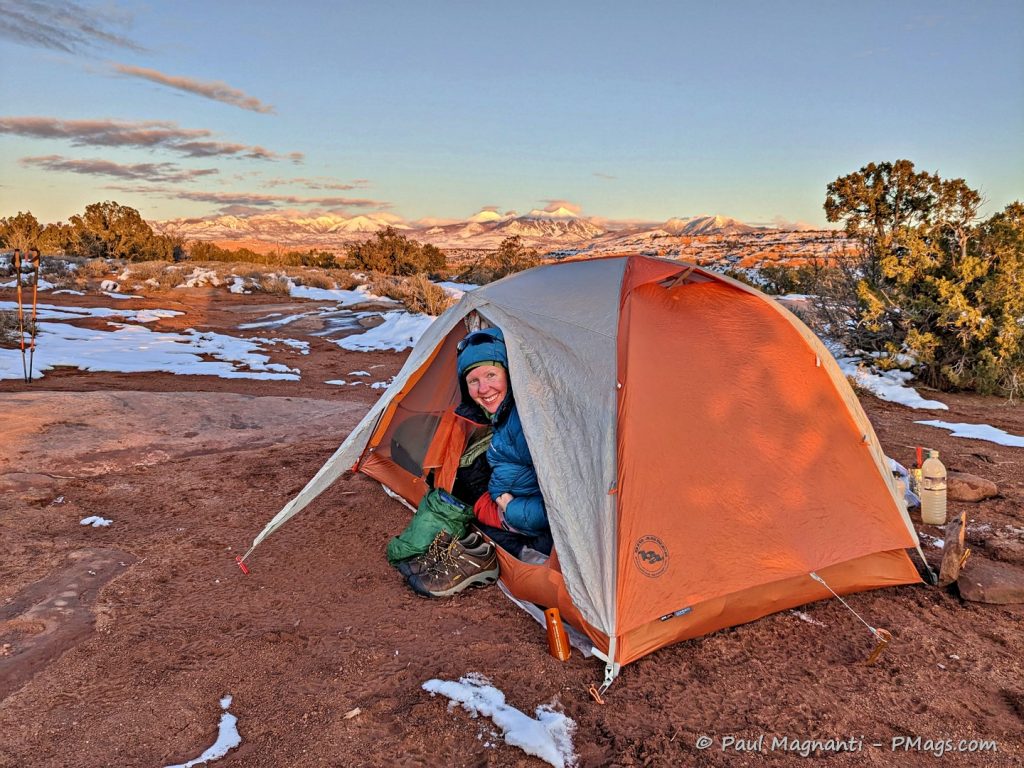
Once settled in, I heat hot water for a post-dinner nightcap.
In the morning, we have a rhythm that lets us break down camp and be on the trail efficiently.
We then repeat.
Getting more specific vs. technique or philosophy, I find the following useful for us:
Shelters – Conventional wisdom states that a single wall, trekking-pole shelter ends up lighter than a free-standing tent. Which is correct as far as it goes. But our Copper Spur HV UL2 ends up split at 2 lbs for me (I take the poles) and ~1 lb for Joan, as we can split it easier. Perhaps just as importantly, it sets up quickly in the rocky and sandy place we call home.
We backpack the entire year, including the cold High Desert winters, and Joan runs cold and deals with Reynaud’s, so a shelter is desirable most of the year. In the summer we go up higher in the mountains where it is cool at night.
Non-freestanding tents work fine on rocky ground. It’s just not as convenient. The two-person, NON-free standing tent is lighter overall if you go solo. You can set up a trekking pole tent using rocks, deadman anchors, the right stakes, etc.
If you go with a partner and split the tent, the two-person free-standing tent consistently ends up functionally the same weight as other options going solo. Perhaps just as importantly, with a hiking partner who is also a romantic partner, the convenience factor does help prevent spirited discussions when you are tired, hungry, and a little cranky. 🙂
Stoves and cooking- Joan typically goes cold even on weekend hikes but enjoys the hot drinks we brew up in the morning. I’ll occasionally brew hot water for her freezer-bag meals; she’ll cold soak to have a hot meal instead.
The lightest canister stove ends up as the BRS, but this stove is inefficient except for solo use. A suitable-sized cooking pot does not balance on it well. We could bring two separate stoves, fuel canisters, and cookpots to keep one of our spreadsheets lighter on paper, but the total weight is more overall. Again, this is a system vs. individual pieces of gear—similar logic to cooking pots.
To have a real-world lower weight vs. sleight of hand on a spreadsheet, I take a larger grease pot at ~5 oz that heats four cups of water, and we use a sub 3oz that works well enough. Call it 8 oz total plus an isobutane canister. Two separate cooking pots, BRS stoves, and fuel canisters would weigh more.
Why not alcohol stoves? Because I think in the arid American West, it is increasingly irresponsible to advocate their use overall, if not outright banned in many cases more and more frequently. They have their place. Just less so in my overall tool kit.
Sleeping pads – I prefer a closed-cell foam Z-lite style pad that is cut down and weighs 6 oz for three-season use. I sleep more comfortably on the foam pad with its rectangular shape vs. the mummy-style pads such as the Uberlite.
Joans is taller than me, needs more padding, sleeps cold, and prefers a higher R-value with more length for better ground coverage. The Nemo Tensor makes a sleeping pad that fits her needs well if at 15 oz. But because I carry some extra weight, Joan can take a heavier but warmer and more comfortable pad that makes her sleeping more enjoyable. Repeating a theme about sharing gear equitably, the overall weight ends up lighter or more effective (and sometimes, both) vs. two separate kits optimized strictly by weight.
Packs – With the water carries, a bulkier tent vs. my solo tent, and sometimes cold weather or packrafting gear, the ULA Circuit works well as my “Jack of All Trades“ pack. This is one case where sharing gear makes me step up in pack size vs. solo kit and no potential weight savings vs. solo. But with the company, I keep an excellent trade-off! 🙂
My CDT works well on three-season mountain trips, and hauling water is not a priority.
For her part, Joan similarly uses her CDT. For more extensive water carries or cold weather, she’ll use a Gossamer Gear Mariposa.
What about a shared quilt or sleeping bag to save weight?
TL; DR – Couples’ sleeping systems work better in theory than in practice. Unless you are both dedicated cuddlers, it does not work well for me and my shared experience.
We find that a couple’s quilt works better in theory than practice. I sleep warm; Joan sleeps cold; I’m on the short side at 5’6,” and she’s tall for a woman at 5’10” (I have to remind her not to put things on the high shelf ) but I’m wider, and we have different pad preferences for three-season backpacking. I’m fine on a CCF; she uses her Nemo Tensor with a higher profile.
Putting pads together would not work for three-season use, and though cuddling all night together sounds good in theory, in the real world, we toss, turn, go to the bathroom, etc. In a tent with a 42″ width, that means a lot of sleep interruption. Of course, the drafts in our quilts created with the getting up, tossing, and turning, and our physiology differences get noticed a lot.
In the winter, we both use an XTherm while backpacking, but the problems of a shared quilt with drafts become even more pronounced.
Though not backpacking-related, when car camping, we have more space to sprawl out in the car camping tent but still run into similar issues. We tend to sack out in the back of our truck with cold weather bags for winter car camping, but cold drafts become more pronounced again. We tried turning our -15F bags into a quilt, and I got lousy sleep.
Just my experience after many nights together.

~~~~~
Hiking together as a couple and taking the concept of going lightweight is more than just a piece of gear on your Ligherpack link. It’s looking holistically at the gear functioning as a whole and working it within the system.
Rather than start with gear weight as the initial criteria, I think of what outdoor goals you have in mind and purchase the lightest and most effective gear for achieving that goal.
We like to be out in all four seasons backpacking here on the Colorado Plateau for Joan and me. With rocky and sandy soil and avoiding “spirited discussions” paramount with little daylight at times, taking a 2 lb shelter for me and a 1 lb shelter for Joan and combining them to form a free-standing tent made the most sense.
And with this philosophy, we still keep our gear load light. When we paddled over to The Maze in February of 2020, even with our pack rafts and cold weather gear, I still had ~15 lbs base pack weight and Joan even less. It is well within lightweight standards for three-season equipment, even more so for cold weather/later winter gear, all with a free-standing tent, XTherms, and even a luxury item such as a Luci Light. By combining equipment and picking the items for our needs, we keep the gear load overall light for our total system in all seasons.
These ideas work for us, and the specifics may change from couple to couple. But I think the idea of finding gear that works in a system and not just counting individual grams to save weight is a solid philosophy for anyone.
And more than the gear, we combine our skill sets and strength to enhance our outdoor time together.
And what’s better than backpacking, camping, and sleeping in the dirt with someone you share your life with?
The answer, for us, is – not much!

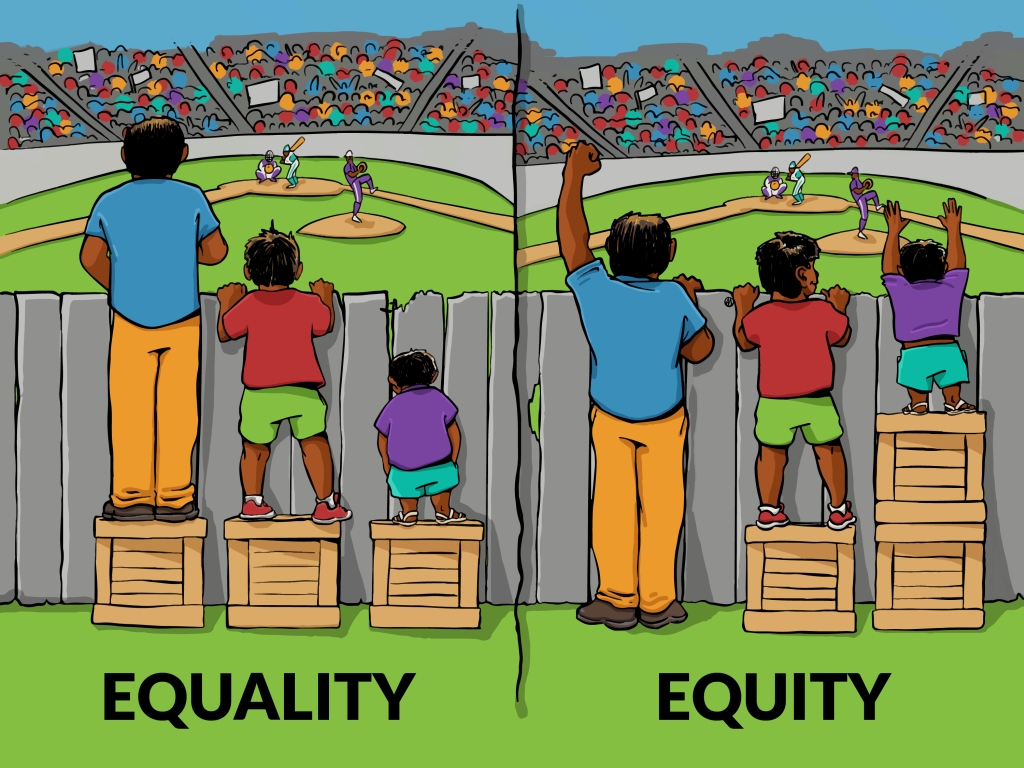
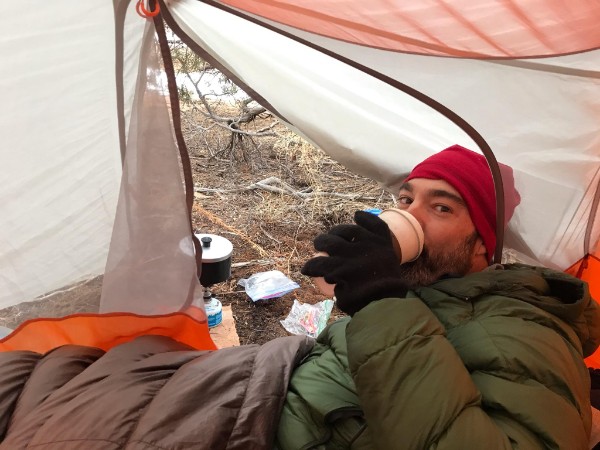
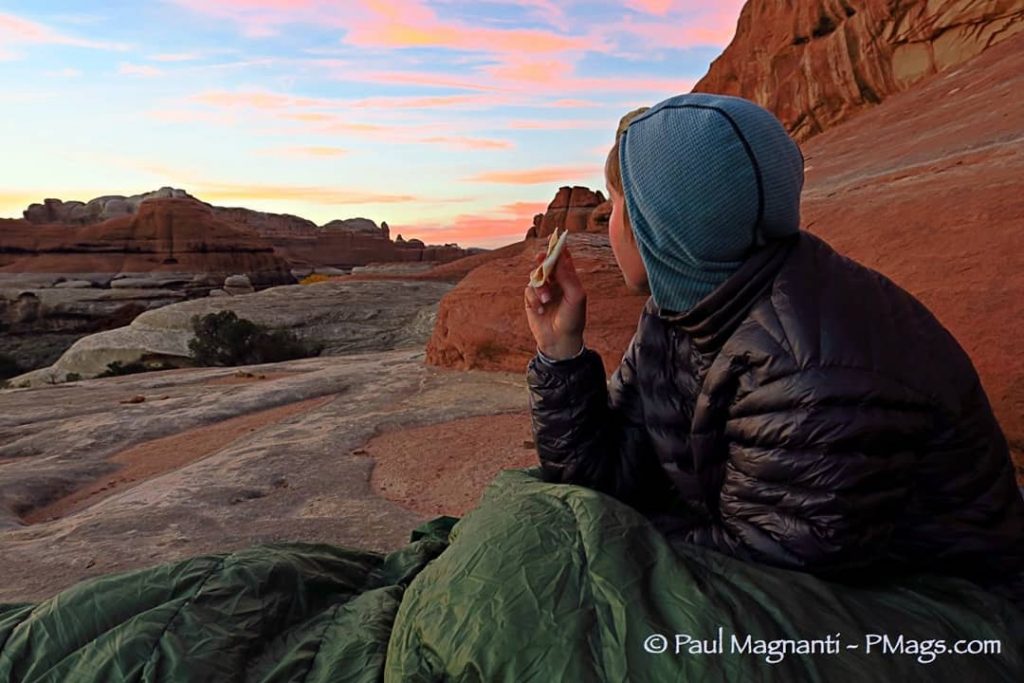
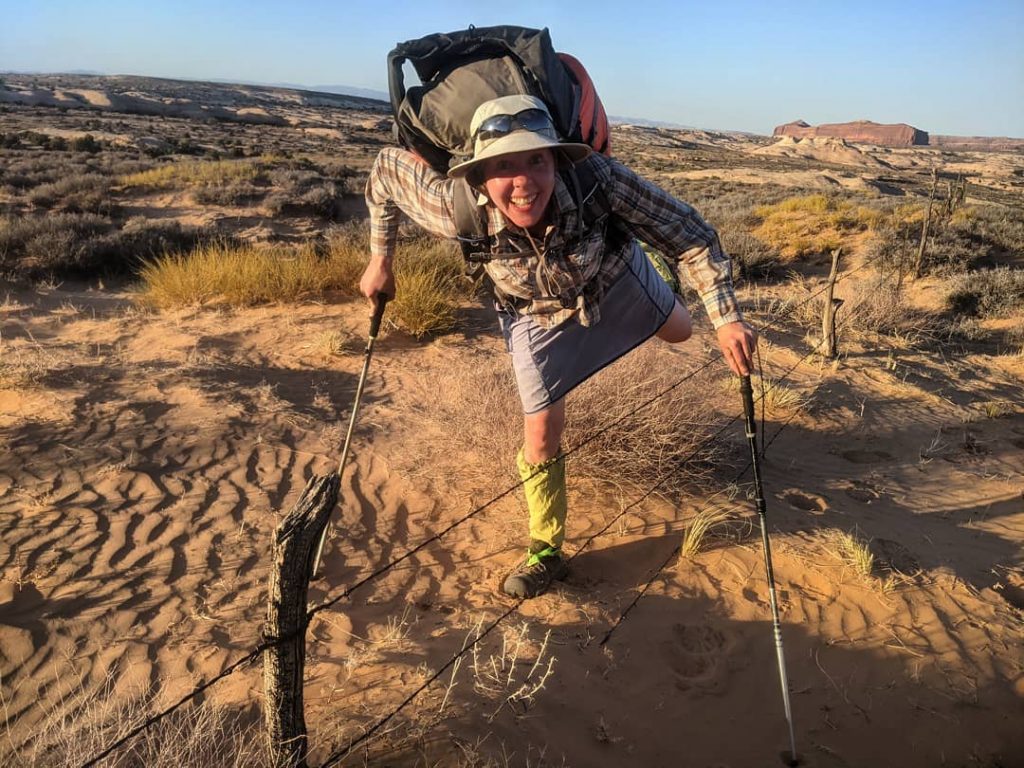
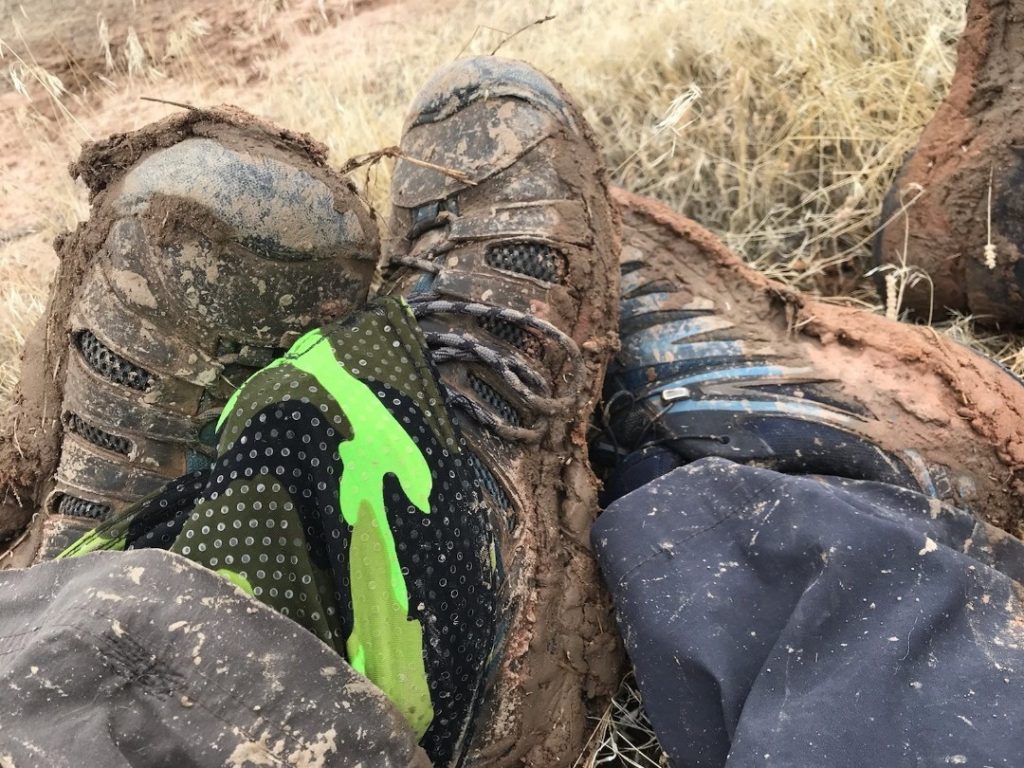
Thanks for a great read and recommendations! My boyfriend and I are just getting into backpacking together, so much fun!
Awesome! Glad we could help. Have fun!
There’s a great love story being told in these posts.
And for the record, spirited discussions are better held outdoors anyhow.
Joan and I have a different threshold for “spirited discussions” due to family backgrounds. My family can get a “little loud.” 🙂